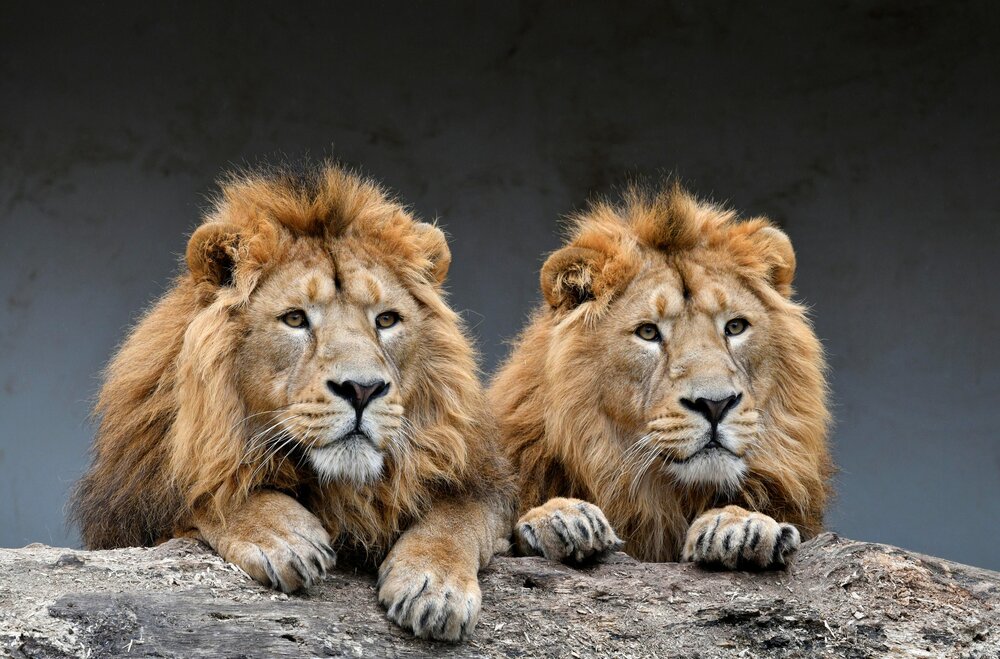April 30, 2019

TEHRAN —
Tehran Zoological Garden, also known as Eram Zoo, will be home to
Asiatic lion, which was extinct in the country for almost 80 years, a
veterinarian at Eram Zoo has said.
According to Iman Memarian the last
remaining Asiatic lion was sighted about 80 years ago in Iran. He went
on to explain that before and after the Islamic Revolution (1979) Iran
made attempts to bring back Asiatic lion to Iran, but Indians did not
cooperate.
Tehran Zoological Garden has put in
efforts to bring back Asiatic lion to Iran for 6 years, he said, adding
that, “we submitted our request to the European Association of Zoos and
Aquaria (EAZA).”
“We also developed a lion pen which complied with EAZA's standards,” Memarian highlighted.
According to the National Geographic
nearly all wild lions live in sub-Saharan Africa, but one small
population of Asiatic lions exists in India's Gir Forest. Asiatic lions
and African lions are subspecies of the same species.
European Endangered Species Programme
(EEP) recommended that a male and a female lions will be brought to
Iran, however, U.S sanctions against Iran has complicated the transfer.
And now after years of collective attempts
on Wednesday morning Tehran Zoological Garden will celebrate the return
of the Asiatic lion to the country, Memarian concluded.
Asiatic lions once prowled from the Middle
East to India. Now, only a fraction of these magnificent animals
survive in the wild. Its range is restricted to the Gir National Park
and environs in the Indian state of Gujarat. The Gir Forest's dry teak
woods were once a royal hunting ground. Today they are a reserve where
these at-risk big cats are heavily protected.
On the International Union for
Conservation of Nature (IUCN) Red List, it is listed under its former
scientific name Panthera leo persica as Endangered because of its small
population size and area of occupancy. It was also known as "Indian
lion" and "Persian lion".
Until the 19th century, it occurred in
eastern Turkey, Iran, Mesopotamia, and from east of the Indus River to
Bengal and Narmada River in Central India. Since the turn of the 20th
century, it is restricted to the Gir Forest National Park and
surrounding areas.
Historical records in Iran indicate that
it ranged from the Khuzestan Plain to the Fars in steppe vegetation and
pistachio-almond woodlands. It was widespread in the country, but in the
1870s, it was sighted only on the western slopes of the Zagros
Mountains, and in the forest regions south of Shiraz. Some of the
country's last lions were sighted in 1941 between Shiraz and Jahrom in
Fars province, and in 1942, a lion was spotted about 65 km northwest of
Dezful. In 1944, the corpse of a lioness was found on the banks of Karun
River in Khuzestan province.
Conflicts with humans, wildfires,
poaching, canine distemper virus, decreases in population sizes of
native ungulates are of the threats to the lions.
MQ/MG
https://www.tehrantimes.com/news/435309/Return-to-motherland-Asiatic-lion-to-return-to-Iran-after-80
https://www.tehrantimes.com/news/435309/Return-to-motherland-Asiatic-lion-to-return-to-Iran-after-80
No comments:
Post a Comment